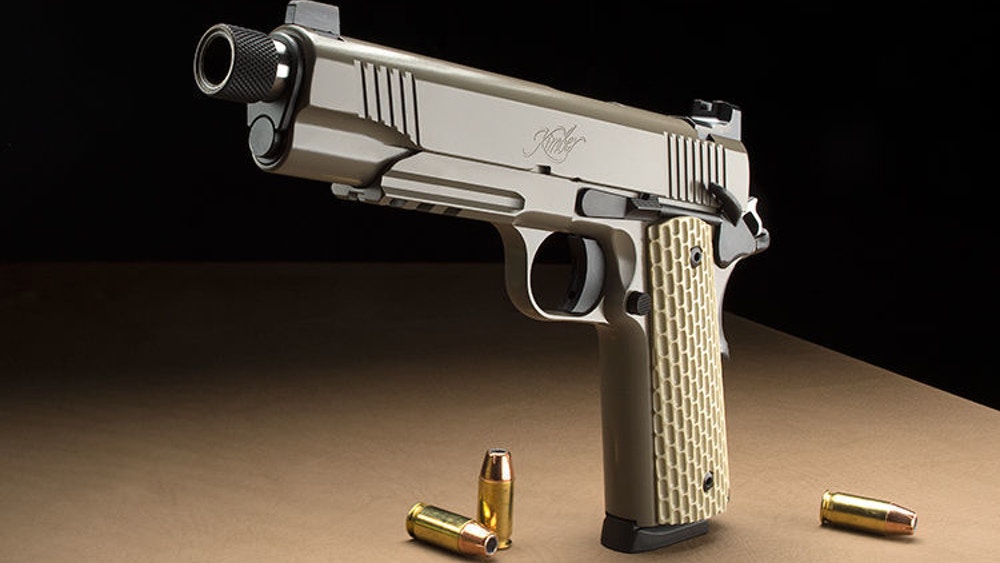If you have an FFL license Type 01 or 02 and are wondering about where you draw the line between performing gunsmithing versus manufacturing, we have answers for you.
Before we delve into the explanation, keep in mind that there are many requirements for firearms manufacturers (FFL Type 07), such as marking standards, reporting requirements and payment of federal firearms excise taxes, that go beyond those for gunsmiths. If you fit the manufacturing criteria as explained below, you should certainly apply for and obtain the type of license for the business you are performing.
Know What You Are
The regulations at 27 CFR 478.11define a “Manufacturer” as “any person engaged in the business of manufacturing firearms or ammunition. The term shall include any person who engages in such business on a part-time basis.”
The regulations define “engaged in the business” as a “Manufacturer of firearms, a person who devotes time, attention and labor to manufacturing firearms as a regular course of trade or business with the principal objective of livelihood and profit through the sale or distribution of the firearms manufactured.” A “gunsmith,” on the other hand, is any person licensed as a dealer, which includes a gunsmith, who is engaged in the business of repairing firearms or making or fitting special barrels, stocks, or trigger mechanisms to firearms. A “gunsmith” may also repair, modify, embellish, refurbish or install parts in or on firearms (frames, receivers or otherwise) for or on behalf of a licensed importer or licensed manufacturer with only his or her dealer’s license, provided he or she meets the three specific conditions stated in both ATF Ruling 2010-10 and ATF Ruling 2015-1.
ATF Ruling 2015-1further clarifies this issue by stating, “Any person (including any corporation or other legal entity) engaged in the business of performing machining, molding, casting, forging, printing (additive manufacturing) or other manufacturing process to create a firearm frame or receiver suitable for use as part of a ‘weapon … which will or is designed to or may readily be converted to expel a projectile by the action of an explosive,’ i.e., a ‘firearm,’ must be licensed as a manufacturer under the Gun Control Act of 1968 (GCA); identify (mark) any such firearm, and maintain the required manufacturer’s records.”
When You Need A Manufacturer’s License
Generally, a person should obtain a license as a manufacturer of firearms if the person:
Is performing operations that create firearms or alter firearms; in the case of alterations, the work is not being performed at the request of customers, rather the person who is altering the firearms is purchasing them, making the changes, and then reselling them
Is performing the operations as a regular course of business or trade and
Is performing the operations for the purpose of sale or distribution of the firearms
Manufacturing activities include:
Forging receivers
Assembly of firearms
Making modifications or alterations to firearms that change performance and durability
Building or assembling a firearm from parts and entering it into commerce (to sell)
Modifying or altering a firearm by replacing parts with enhancements or modifications to alter the functionality or durability of the firearm from its original specifications (generally to improve the performance)
Forging or building completed receivers that are considered firearms by ATF standards (you are then required to follow all firearm marking and reporting requirements)
Disassembling firearms and rebuilding/reconstructing firearms for resale
Purchasing used or new guns and making modifications such as bluing or Cerakoting and then reselling the firearm
Regularly purchasing surplus military rifles and sporterizing them with modifications such as bending the bolts to accept a scope and drilling the receiver for a scope base, then offering them for sale to the public.
Threading barrels or attaching custom muzzle breaks to company-owned firearms and making them available for sale to the general public
It’s Different For Gunsmiths
The following are examples of gunsmithing when a firearm is received from a customer, repaired or serviced and returned to that same customer:
Engraving or camouflaging a firearm for a customer and hence later returning the firearm
Repairing or adjusting a trigger assembly for a customer, completing “drop-in” repairs
Drilling for and attaching a scope mount, attaching a scope
Replacing or repairing a stock or a grip
Replacing or upgrading sights
Receiving firearm frames from individual customers, attaching stocks and barrels and returning the firearms to the customers for the customers’ personal use (i.e., since the operations performed on the firearms were not for sale or distribution, the company should be licensed as a dealer-gunsmith, not as a manufacturer of firearms)
Threading barrels or attaching custom muzzle breaks
This covers the basics of being a manufacturer versus a gunsmith. In Part II, we’ll examine some of more specific scenarios in which questions may come up, those gray areas you’ll want to consider. In all cases, the information and examples portrayed here are not all-inclusive and should not be interpreted as law or ATF guidelines. It is always our best recommendation to contact your local ATF Office or the ATF Firearms Technology Division with questions. Remember, your ATF partners are always willing to help guide you to do things right and safeguard your FFL. NSSF’s Compliance and Store Security Audit teams are also standing by to assist you with any compliance, security or operational issues.
By John Bocker, John Clark, Wally Nelson and Harry McCabe, NSSF Compliance Consultant Team Members


